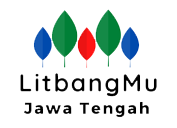PENGARUH MODEL PEMBELAJARAN PROBLEM BASED LEARNING TERHADAP HASIL BELAJAR DAN KEAKTIFAN DISKUSI PESERTA DIDIK KELAS X
DOI:
https://doi.org/10.51402/jlste.v3i1.133Keywords:
Problem Based Learning, Hasil Belajar, Keaktifan DiskusiAbstract
A research study was conducted with the aim of determining the cognitive learning outcomes and discussion activity (affective) of students on the topic of Material and its changes by implementing the Problem-Based Learning (PBL) model supplemented with Student Worksheets (LKPD). This research is a qualitative descriptive study consisting of stages such as situational analysis, challenges, obstacles, improvement efforts, and research outcomes. The research subjects were male and female students of X TAB 3. Data were collected through diagnostic, formative, and summative assessments, interviews, observations, and documentation. Data collection techniques involved tests (cognitive domain), Peer Assessment (attitude domain), and non-tests (interviews and surveys). Based on the research findings, it is evident that the innovative PBL model can improve students' cognitive learning outcomes, as assessed by the summative assessment (post-Test) with the PBL model supplemented with LKPD categorized as good, achieving a mastery rate of 90% compared to the pre-test results of only 55%. Moreover, there was an increased participation during task completion discussions (LKPD), where in the discussion of LKPD 1, 70% of students received an Excellent (SB) predicate and 30% received a Good (B) predicate. Similarly, in the discussion of LKPD 2, 85% of students received an Excellent (SB) predicate and 15% received a Good (B) predicate.






 Pendidikan Profesi Guru (PPG) UNIMUS
Pendidikan Profesi Guru (PPG) UNIMUS
